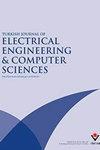利用序贯蒙特卡罗框架进行已知范围的多椭球扩展目标跟踪
IF 1.5
4区 计算机科学
Q4 COMPUTER SCIENCE, ARTIFICIAL INTELLIGENCE
Turkish Journal of Electrical Engineering and Computer Sciences
Pub Date : 2019-04-01
DOI:10.3906/ELK-1811-52
引用次数: 1
摘要
本文研究了扩展目标跟踪问题的一个变体,即多脂面扩展目标跟踪问题。在多椭球ETT中,目标范围由多个椭圆表示,这些椭圆对应于目标表面上的测量原点。该问题涉及目标的运动状态估计和测量值与椭圆的关联问题的求解。我们将问题置于顺序蒙特卡罗(SMC)框架中,并研究了不同的边缘化策略来寻找有效的粒子滤波器。在已知程度假设下,定义关联变量,找出测量值与椭圆之间的正确关联;因此,后验既包括离散随机变量,也包括连续随机变量。通过将测量似然表示为高斯函数的混合,我们推导并采用了独立关联变量的边缘粒子滤波器,而不需要对离散状态进行采样。我们比较了该方法与其他方法的性能,并说明了非标准边缘化的增益。本文章由计算机程序翻译,如有差异,请以英文原文为准。
Multiellipsoidal extended target tracking with known extent using sequential Monte Carlo framework
In this paper, we consider a variant of the extended target tracking (ETT) problem, namely the multiel- lipsoidal ETT problem. In multiellipsoidal ETT, target extent is represented by multiple ellipses, which correspond to the origin of the measurements on the target surface. The problem involves estimating the target’s kinematic state and solving the association problem between the measurements and the ellipses. We cast the problem in a sequential Monte Carlo (SMC) framework and investigate different marginalization strategies to find an efficient particle filter. Under the known extent assumption, we define association variables to find the correct association between the measurements and the ellipses; hence, the posterior involves both discrete and continuous random variables. By expressing the measurement likelihood as a mixture of Gaussians we derive and employ a marginalized particle filter for the independent association variables without sampling the discrete states. We compare the performance of the method with its alternatives and illustrate the gain in nonstandard marginalization.
求助全文
通过发布文献求助,成功后即可免费获取论文全文。
去求助
来源期刊

Turkish Journal of Electrical Engineering and Computer Sciences
COMPUTER SCIENCE, ARTIFICIAL INTELLIGENCE-ENGINEERING, ELECTRICAL & ELECTRONIC
CiteScore
2.90
自引率
9.10%
发文量
95
审稿时长
6.9 months
期刊介绍:
The Turkish Journal of Electrical Engineering & Computer Sciences is published electronically 6 times a year by the Scientific and Technological Research Council of Turkey (TÜBİTAK)
Accepts English-language manuscripts in the areas of power and energy, environmental sustainability and energy efficiency, electronics, industry applications, control systems, information and systems, applied electromagnetics, communications, signal and image processing, tomographic image reconstruction, face recognition, biometrics, speech processing, video processing and analysis, object recognition, classification, feature extraction, parallel and distributed computing, cognitive systems, interaction, robotics, digital libraries and content, personalized healthcare, ICT for mobility, sensors, and artificial intelligence.
Contribution is open to researchers of all nationalities.
 求助内容:
求助内容: 应助结果提醒方式:
应助结果提醒方式:


